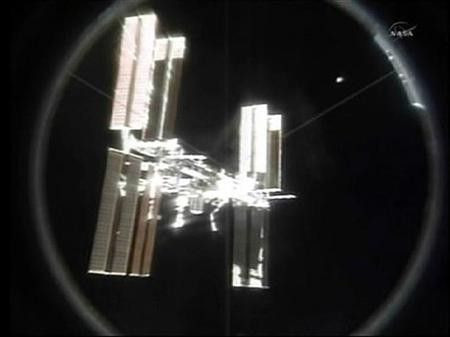Rocket failure exposes space station vulnerability

When a Russian rocket failed on its way to orbit last month, it exposed a vulnerability in the International Space Station program that a former NASA astronaut thinks China could help address.
The August 24 failure of the Russian Progress rocket prompted NASA and its partners in the $100 billion space station project to delay launch of the next crew until the cause of the failure is found, fixed and tested.
The cause of the accident is under investigation after the unmanned rocket burned up in the atmosphere and debris fell onto parts of Siberia. The Progress rocket, which was carrying a cargo capsule of food and fuel, and the Soyuz booster that carries crew use nearly identical upper-stage motors.
Half of the station's six live-aboard crew members are due home next week and their colleagues will follow by November 19. The dates were determined by the design lifetimes of the Soyuz capsules already in orbit -- which do not use rockets to return to Earth -- and other technical factors.
If a new crew is not launched by mid-November, the station could be left untended for the first time in 11 years.
Former U.S. astronaut Leroy Chiao, a four-time flyer who served as commander of the space station from October 2004 to April 2005, says leaving the station unmanned raises the odds it could tumble from orbit.
There are a number of relatively small mistakes or glitches that could cause you to loose attitude control, Chiao told Reuters, referring to how engineers maintain the space station's position in orbit.
UNLIKELY SCENARIO
Without good pointing, the station's antennas might not be able to lock on to satellites and ground stations needed to communicate with mission control centers.
NASA says that scenario is highly unlikely and the station would be safe even if it had to be left unmanned for a short time.
You're talking about multiple, multiple failures, station program manager Mike Suffredini told Reuters. You'd have to lose a lot of equipment and even then (the station) doesn't start spinning wildly. It drifts.
Eventually, ground control teams could regain control of the station by switching to omni-directional antennas or waiting until the outpost flies over Russian ground stations, Suffredini said.
With the retirement of the U.S. space shuttles this summer, crews can reach the station only aboard Russian rockets. China, the only other country able to fly people into orbit, is not a partner in the space station.
Chiao said it was time for that to change to ensure the integrity of the recently completed project of 16 nations that is designed to operate at least through 2020 as a unique gravity-free scientific research outpost.
I think (China) is the fastest route to a backup vehicle for the space station, he said.
The current U.S. plan is to pay Russia to fly NASA astronauts, at a cost of more than $50 million per person, until U.S. companies are able to do so.
Several firms -- including Boeing Co, Space Exploration Technologies, Sierra Nevada Corp and Blue Origin -- are designing commercial passenger spaceships, helped in part by NASA contracts worth a total of $92 million.
Suffredini said Chiao was underestimating the amount of time and complexity needed to bring China into the space station partnership, even if political winds shifted and the proposal gained momentum.
Just because they built a system that's like the Soyuz doesn't mean you can dock it with the space station, he said.
NASA administrator Charlie Bolden said he thinks Russia will be able to resume Soyuz flights before the last of the current crew departs in November.
The possibility of de-manning station is always something you think about but it's not something that's high on my list of concerns right now, Bolden said.
© Copyright Thomson Reuters 2024. All rights reserved.




















